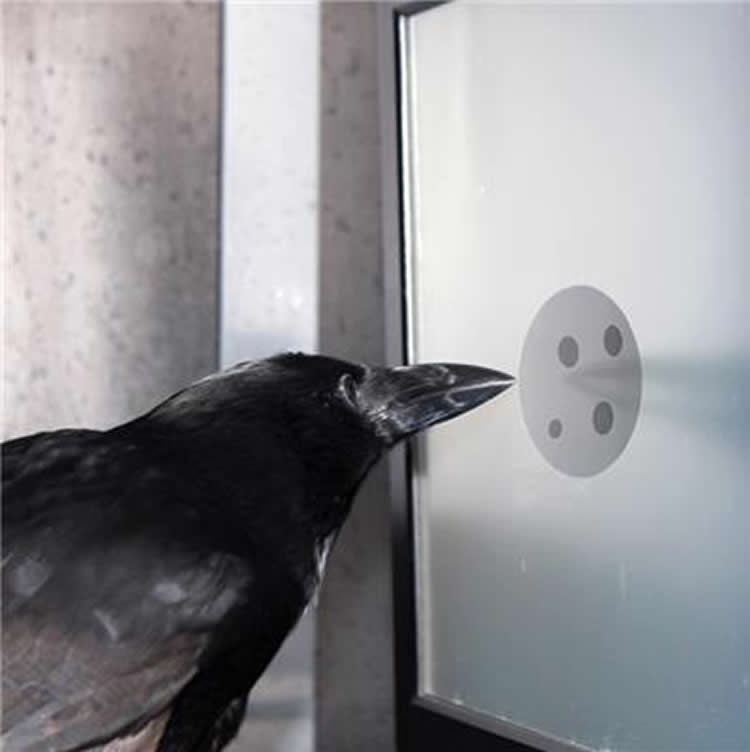Tübingen neurobiologists discover cells in the crow brain that respond to a specific number of items.
An old story says that crows have the ability to count. Three hunters go into a blind situated near a field where watchful crows roam. They wait, but the crows refuse to move into shooting range. One hunter leaves the blind, but the crows won’t appear. The second hunter leaves the blind, but the crows still won’t budge. Only when the third hunter leaves, the crows realize that the coast is clear and resume their normal feeding activity.
Helen Ditz and Professor Andreas Nieder of the University of Tübingen found the neuronal basis of this numerical ability in crows. They trained crows to discriminate groups of dots. During performance, the team recorded the responses of individual neurons in an integrative area of the crow endbrain. This area also receives inputs from the visual system. The neurons ignore the dots’ size, shape and arrangement and only extract their number. Each cell’s response peaks at its respective preferred number.

The study published in PNAS provides valuable insights into the biological roots of counting capabilities. “When a crow looks at three dots, grains or hunters, single neurons recognize the groups’ ‘threeness’ “, says Helen Ditz. “This discovery shows that the ability to deal with abstract numerical concepts can be traced back to individual nerve cells in corvids.” What makes this finding even more interesting is that a long evolutionary history separates us from birds. As a consequence, the brains of crows and humans are designed very differently. “Surprisingly, we find the very same representation for numbers as we have previously discovered in the primate cortex,” Prof. Andreas Nieder says. “It seems as if corvids and primates with independently und distinctively developed endbrains have found the same solution to process numbers.” Even abstract behavior which we think of as sophisticated mental feats ultimately has biological roots.
Source: Universitaet Tübingen
Image Credit: The image is credited to Andreas Nieder
Original Research: Abstract for “Neurons selective to the number of visual items in the corvid songbird endbrain” by Helen M. Ditz and Andreas Nieder in PNAS. Published online May 11 2015 doi:10.1073/pnas.1504245112
Abstract
Neurons selective to the number of visual items in the corvid songbird endbrain
It is unknown whether anatomical specializations in the endbrains of different vertebrates determine the neuronal code to represent numerical quantity. Therefore, we recorded single-neuron activity from the endbrain of crows trained to judge the number of items in displays. Many neurons were tuned for numerosities irrespective of the physical appearance of the items, and their activity correlated with performance outcome. Comparison of both behavioral and neuronal representations of numerosity revealed that the data are best described by a logarithmically compressed scaling of numerical information, as postulated by the Weber–Fechner law. The behavioral and neuronal numerosity representations in the crow reflect surprisingly well those found in the primate association cortex. This finding suggests that distantly related vertebrates with independently developed endbrains adopted similar neuronal solutions to process quantity.
“Neurons selective to the number of visual items in the corvid songbird endbrain” by Helen M. Ditz and Andreas Nieder in PNAS. Published online May 11 2015 doi:10.1073/pnas.1504245112







